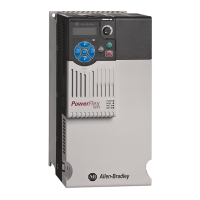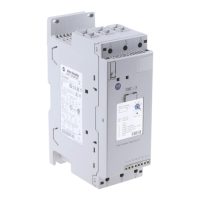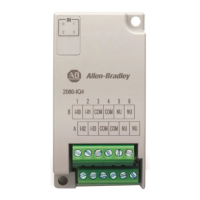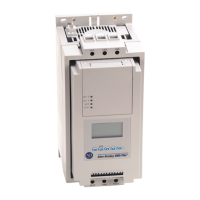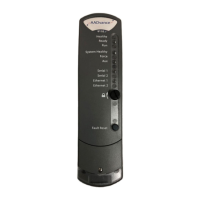Rockwell Automation Publication PFLEX-RM003E-EN-E - January 2011 43
Detailed Drive Operation Chapter 1
Client/Server
C/S messages operate in the background (relative to other message types) and are
used for non-control purposes. The C/S messages are based on a 10 ms “ping”
event that allows peripherals to perform a single transaction (in other words, one
C/S transaction per peripheral per time period). Message fragmentation (because
the message transaction is larger than the standard CAN message of eight data
bytes) is automatically handled by C/S operation. The following types of
messaging are covered:
• Logging in peripheral devices
• Read/Write of parameter values
• Access to all parameter information (limits, scaling, default, etc.)
• User set access
• Fault/Alarm queue access
• Event notification (fault, alarm, etc.)
• Access to all drive classes/objects (e.g. Device, Peripheral, Parameter, etc.)
Producer/Consumer Operation Overview
P/C messages operate at a higher priority than C/S messages and are used to
control/report the operation of the drive (for example, start, stop, etc.). A P/C
status message is transmitted every 5 ms (by the drive) and a command message is
received from every change of state in any attached DPI peripheral. Change of
state is a button being pressed or error detected by a DPI peripheral. P/C
messages are of a fixed size, so support of message fragmentation is not required.
The following types of messaging are covered:
• Drive status (running, faulted, etc.)
• Drive commands (start, stop, etc.)
• Control logic parsing operations (for example, mask and owner
parameters)
• Entering Flash programming mode
• “Soft” login and logout of peripheral devices (enabling/disabling of
peripheral control)
Peer-to-Peer Operation
Peer-to-Peer messaging allows two devices to communicate directly rather than
through the master or host (drive). They are the same priority as C/S messages
and will occur in the background. If an LCD HIM is attached to the PowerFlex
700S drive, it will be able to directly request off-board parameters using Peer-to-
Peer messages (i.e., no proxy support needed in the drive). PowerFlex 700S drives
can use all six communication ports because Peer-to-Peer proxy operations are
not needed. All Peer-to-Peer operations occur without any intervention from the
user (regardless of proxy or normal P/P operation), no setup is required. No Peer-
to-Peer proxy operations are required while the drive is in Flash mode.

